
What Is Reverse Osmosis (RO) and How It Works
Reverse osmosis is a water purification technology that uses high pressure to force water through a semipermeable membrane. The membrane’s microscopic pores block contaminants, such as dissolved salts, dirt, heavy metals and fluoride, while allowing pure water molecules to pass through, separating the water into a purified stream and a second stream that carries away the rejected impurities.
Permeate vs. concentrate
The RO process creates two streams of water. The purified water that passes through the membrane is called permeate. The remaining water, containing all the rejected contaminants, is called a concentrate or brine. Modern systems use crossflow filtration, where water sweeps across the membrane surface, helping to wash away rejected particles and prevent the filter from clogging quickly.
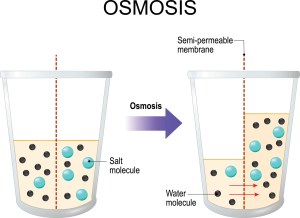
What RO reduces and what it doesn’t
Reverse osmosis can reduce a wide array of common water contaminants. However, like any filtration method, it has its specialties and limitations:
|
What RO Addresses Well |
What May Require Additional Filtration Steps |
|
|
|
|
|
|
|
|
For some office needs where the primary concern is taste and odor from chlorine, non-RO filtration using activated carbon may be enough. However, reverse osmosis is the ideal choice when water chemistry shows high levels of dissolved solids or heavy metals that warrant a comprehensive purification solution.
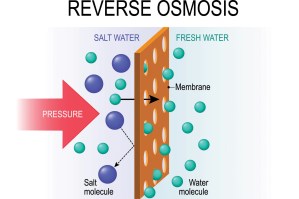
Is reverse osmosis healthy and safe to drink?
Yes, water from a properly maintained reverse osmosis system produces water of very high purity. Another common question is whether removing minerals from water via filtration is unhealthy. Although RO reduces minerals, such as calcium and magnesium, the majority of essential minerals in our bodies come from food, not water. For many, the benefit of removing potentially harmful contaminants outweighs the reduction of a small amount of minerals.
RO efficiency and EPA WaterSense
Traditional RO systems created a significant amount of wastewater (concentrate) for every gallon of purified water produced. However, technology has advanced considerably. To promote water conservation, the U.S. Environmental Protection Agency created the WaterSense label for high-efficiency RO systems. These certified models are independently tested to meet performance and efficiency criteria, so they save water and money without compromising quality.
|
System Type |
Typical Water Waste Ratio (Waste : Pure) |
|
|
|
|
Certifications and claims
When choosing an RO system, look for third-party certifications to verify its performance. Organizations such as NSF International test systems against rigorous standards. For example, NSF/ANSI 58 is an important certification for RO systems that confirms their ability to reduce contaminants, such as lead, arsenic, copper and fluoride, and ensures the materials used are safe for contact with drinking water.
Pretreatment and maintenance
To protect the delicate RO membrane and keep the system running efficiently for years, pretreatment is essential. Most RO systems include pre-filters to tackle issues before they reach the membrane:
- Sediment filters remove dirt, rust and sand.
- Carbon filters remove chlorine and chloramine, which can damage the RO membrane.
Regular maintenance, such as changing the pre-filters and RO membrane, according to the manufacturer’s schedule, is nonnegotiable for maintaining consistent performance and water quality.
Here’s a quick guide to RO performance:
- Recovery (%): This is the percentage of feedwater that becomes purified permeate. Higher recovery means less wastewater.
- Salt rejection (%): The salt rejection percentage measures the dissolved solids removed from the feedwater.
- Scaling risk: High recovery can increase the concentration of minerals, such as calcium, in the concentrate stream, raising the risk of scale buildup on the membrane. This is why pretreatment with softeners or antiscalants is critical in areas with hard water.
RO vs. carbon filtration
Reverse osmosis and carbon filtration improve water quality, but they work differently and target different contaminants:
|
Feature |
Reverse Osmosis |
Carbon Filtration |
|
How It Works |
|
|
|
Best for Removing |
|
|
|
Limitations |
|
|
RO taste and remineralization
Because reverse osmosis removes nearly everything, the resulting water is incredibly pure. Such a high level of purity can give it a flat taste, as the minerals that give water its familiar flavor have been removed. Plus, RO doesn’t remove dissolved gases, such as carbon dioxide, which can slightly lower the water’s pH.
To address this, modern systems often include a remineralization stage that adds a small, balanced amount of healthy minerals and electrolytes to the purified water. The result is a crisp, refreshing flavor and raised pH for a smoother feel.
quenchWATER+ systems
Culligan Quench’s bottleless water coolers with quenchWATER+ give you and your team the best of both worlds. They use a five-filter process, including reverse osmosis, to produce exceptionally pure water. Then, our exclusive remineralization stage adds minerals and electrolytes back in, so your team enjoys refreshing, great-tasting water that keeps them hydrated and productive.
Our approach is a sustainable, high-performance alternative to the environmental and logistical burdens of bottled water delivery.
Schedule a consultation today.
FAQs
Does RO remove fluoride?
Yes, reverse osmosis systems are exceptionally effective at removing fluoride, typically reducing it by 90% to 99%. The membrane’s microscopic pores physically block fluoride ions from passing through. For verified performance, always choose a system certified under NSF/ANSI 58 for fluoride reduction and maintain its filters as recommended.
Does RO waste water?
Yes, RO systems produce wastewater (concentrate) as a necessary part of their self-cleaning process, which flushes away the filtered contaminants. However, modern high-efficiency systems are designed to minimize this. Look for EPA WaterSense-labeled models with a superior waste ratio of 2.3:1 or better to conserve water.
Is RO water safe to drink every day?
Absolutely. RO water is one of the purest and safest types of water for daily drinking. Many people prefer systems with a remineralization feature, which adds back beneficial minerals to enhance taste.
Does RO remove chlorine/chloramine?
Yes, many RO systems remove chlorine and chloramine. A dedicated carbon pre-filter removes these disinfectants to protect the delicate RO membrane from damage.
Do I still need UV?
UV is recommended where microbial safety is a top priority. While the RO membrane can be an effective physical barrier to bacteria and viruses, it isn’t a certified disinfectant. A final UV sanitation stage can neutralize any potential microorganisms.
Authored by

Elizabeth Smith
Elizabeth Smith is a seasoned writer with a background in science and technology, now focused on workplace wellness, sustainability, and smart business solutions. With more than a decade of experience writing for universities and private companies in the engineering and tech sectors, she brings a research-driven approach to every topic.
Recommended products
Culligan Quench has an advanced suite of point-of-use systems that are designed to meet the needs of workplaces of all shapes and sizes. Here are some products we recommend for your business.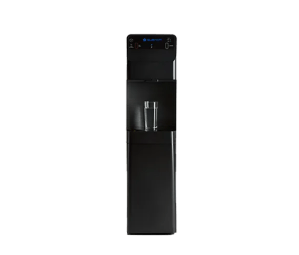
Q4 Touchless Bottleless Water Cooler
Available with quenchWATER+ electrolyte water
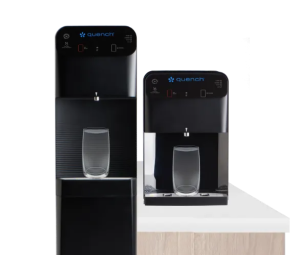
Q8 Touchless Bottleless Water Cooler
Available with quenchWATER+ electrolyte water
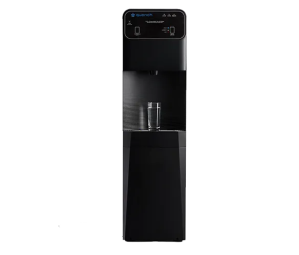
Q12 Touchless Bottleless Water Cooler
Available with quenchWATER+ electrolyte water